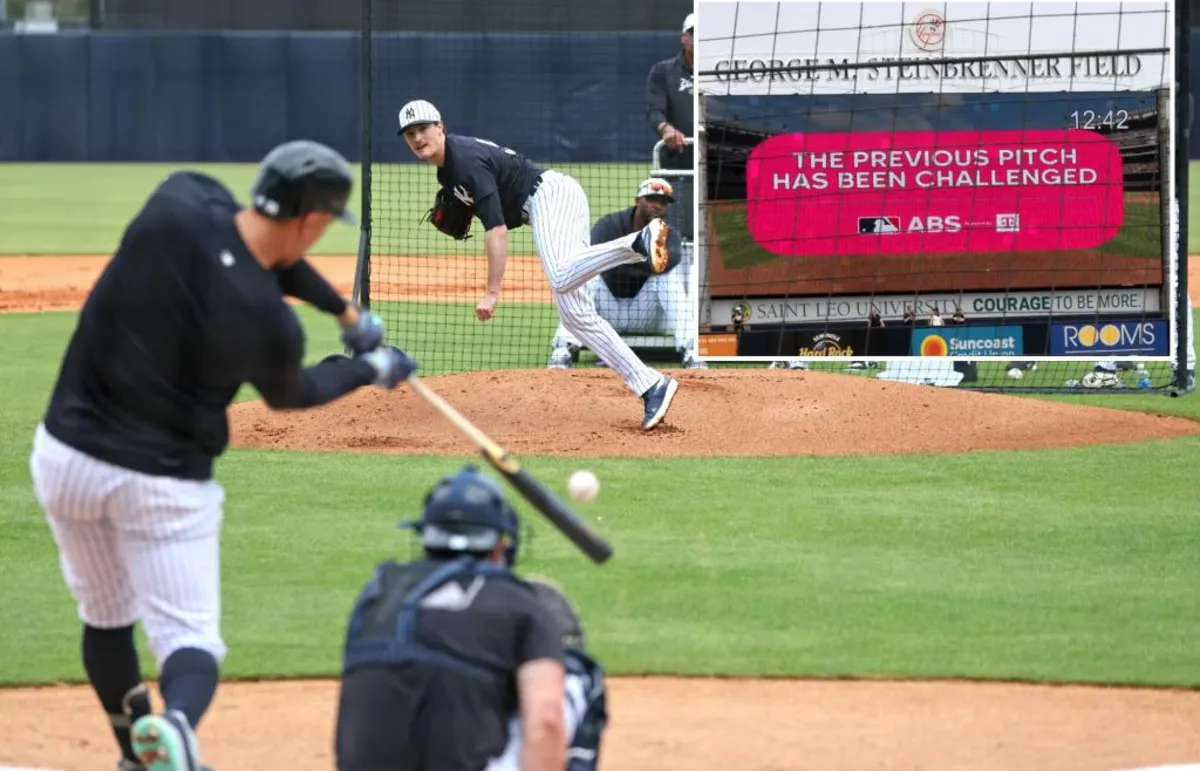
TAMPA — The New York Yankees are set to experience a glimpse of the future during Friday's Grapefruit League opener against the Rays. The automated ball-strike system (ABS) will be implemented at Steinbrenner Field this spring. Major League Baseball is testing this challenge system during exhibition games, aiming for potential integration into the regular season by 2026.
The ABS does not equate to "robo umpires." Instead, it allows teams to make two challenges per game. These challenges can only be initiated by the pitcher, catcher, or hitter within two seconds of a pitch. If a challenge is successfully upheld, the team retains it.
The Yankees had a preliminary trial with the system on Wednesday during live batting practice. The ABS will be utilized in eight of the 13 Grapefruit League stadiums. Players can call for a challenge by tapping their helmet or hat, prompting the scoreboard to display whether the pitch was within the strike zone as determined by the Hawk-Eye tracking system. The strike zone is specifically tailored to each batter's height.
"I think the biggest thing is for all of us to get to see how it works, see how we like it," said Yankees manager Aaron Boone. "But I’m going in with no hard and fast rules." Boone mentioned that initially, players could challenge a pitch at their discretion, though they might establish more structured guidelines as spring progresses.
If the system were implemented this season, the Yankees would proactively develop a strategic approach from the outset. Fortunately, several Yankees players already have experience with ABS from its use in Triple-A during the latter half of last year and on weekends at Single-A.
J.C. Escarra, Friday's starting catcher, praised the system, stating, "I think it’s awesome." Escarra, who acclimated to ABS last season, noted that the strike zone "cuts off a little bit of the top and gives more on the bottom," emphasizing the variability that teams can strategically exploit.
Escarra revealed his approach to using challenges: "I tried to use one challenge in the first five innings of a game but then would keep the other in my back pocket for the end of the game." This tactic ensured umpires maintained accuracy, as Escarra would monitor closely to potentially reverse a call if needed.
The catcher also noted that the ABS minimally impacts the pace of play. "Right when someone checked it, the umpire turned around, asked to see it on the screen and in a matter of five seconds, it was already on the screen," he explained.
Despite the introduction of ABS, Escarra believes it will not decrease the value of catcher framing. "How many pitches do I catch in a game? Probably 150, 200," Escarra stated. He emphasized that even if a strike is "stolen," it doesn't necessarily mean the hitter will react accordingly, maintaining the strategic value of framing.